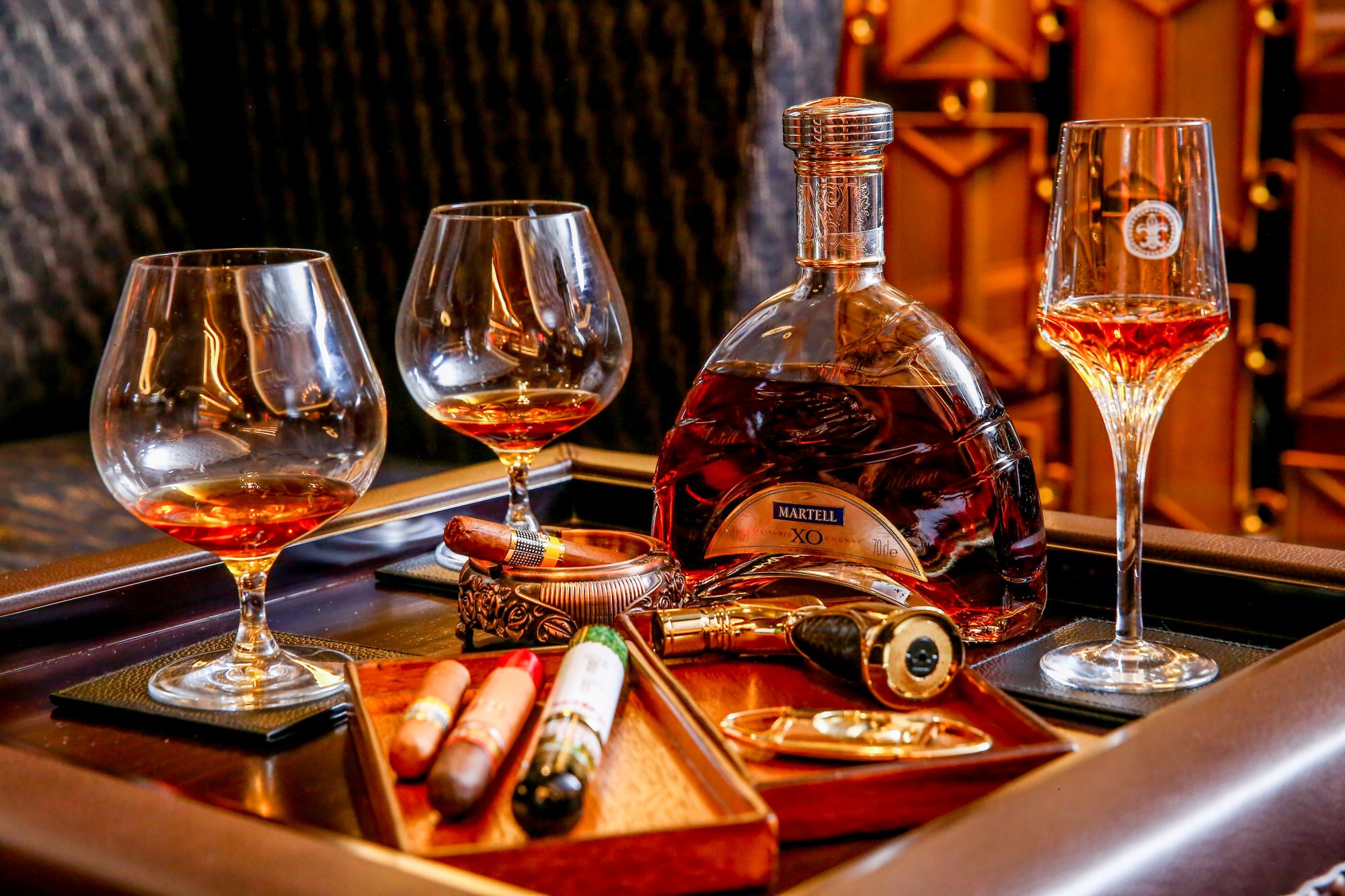3 Things You Have To Know About Cognac


Dubbed as the finest kind of brandy, cognac has been for generations a staple after-dinner drink. It got its name from its origin, the town of Cognac in the western side of France, situated on the river Cherente between the towns of Angoulême and Saintes. The label of being a 'cognac' is not easily given to brandies. They should be made in certain areas around the said town and followed strict production regulations.
Cognac is a type of brandy known as brandewijn in Dutch, meaning "burnt wine". This term was coined during the 12th Century when wines were distilled by merchants to prolong shelf life and endurance for long trade routes—this process eventually gained popularity among the British and Irish. Today, cognac is a double-distilled liquor, blended from eaux de vie (standard flavoured brandies) of varying vintages and harvested from different vineyard areas around Cognac, France. The optimum quality of the cognac rests upon the cellar master's skill and expertise in blending multiple eaux de vie.

Traditionally, cognac has been considered a popular drink among society gentlemen—a beverage often enjoyed over a poker game or after a fine dinner. It is also believed to have medical benefits, like being helpful to the cardiovascular system when consumed in moderation. Nowadays, cognac is no longer seen exclusively as an after-dinner drink, as it is served in cocktail mixes as well. Whatever way you consume this fine liquor—neat or on the rocks—here are few essential things you should know about the Tatler Man's quintessential drink:
1/3 The differences of VS, VSOP, and XO
"What do these acronyms stand for?" you might ask when facing a bottle of cognac. There are three classifications of a cognac: VS for "Very Special", VSOP for "Very Special/Superior Old Pale", and XO for "Extra Old". These labels indicate the age of the youngest eau de vie used as most cognacs are mixes of 20, 30, or 40 eaux de vie. Remember that the longer the cognac matures in the barrel, the smoother it is on the nose and the palate. Unlike wines, once cognacs are bottled, there is no further development.
VS cognacs are at least two and a half years old. They are more aggressive to the nose and on the palate, but you will find more fresh fruity flavours in them. VSOP cognacs, as well as those labelled as VO (Very Old) and Reserve, are at least four and a half years old. They deliver more aromatic notes of stewed fruits or jams. Cognacs designated as XO, Vieille Reserve, Extra, and Hors d'Age have to be at least six and a half years to ten years old. They express flowery and spicy aromas and have a smoother finish. Meanwhile, XXO for "Extra, Extra Old" has been added last 2018 to distinguish cognacs that have been aged for at least 14 years. This could be credited to a cellar masters' creativity of blending very old cognacs that have been aged in barrels since the 19th Century.
2/3 Cognac Glasses

There are two basic glasses that you may use to properly taste cognac. First is the tulip glass and second is the balloon glass (also known as "brandy snifter"). With tulip glasses, the cognac's bouquet intensifies fuller because the shape of the glass is narrower and gives direct, upward flow for the aroma. Meanwhile, balloon glasses have shorter stem and a wider bell. This concentrates the aroma and intensifies the flavour on a lesser degree than that of the tulip.
3/3 Appreciating Cognac

Step 1: Select the type of cognac you want to enjoy. Is it VS, VSOP, or XO? Pour about 22 to 25 millilitres of cognac into the glass of your choice.
Step 2: Warm the cognac in your hand. Remember that you need first to hold your hand around the glass for up to 10 minutes to make the cognac easier to appreciate. This makes the aromas and nuances of the cognac smoother on the nose and the palate. However, in some countries where the climate is warmer or the cognac bottle was brought out from a very warm shelf, people add two ice cubes at most.

Step 3: Check "the eye". The colour of the cognac can give you a rough indication of its age. You could see this by looking at the cognac's reflection on the table. If you see straw or honey colour, the younger the cognac is. As they mature, cognacs become gold in hue or in a deeper shade like amber.
Step 4: "The nose". This is the aromas that you smell when you sniff the cognac from the edge of the glass. You might get hints of different fruits or flowers, depending on its age classification. However, you can't go wrong when determining these hints as smell and taste can be subjective. It will really depend on your library of sensory memories.
Step 5: Swirl the glass to release different aromas within the blend and smell it once again. You will find that some notes become more apparent at this point. Take a small sip and allow your taste buds to distinguish different flavours. Enjoy a luxurious and satisfying finish as you swallow the drink.

The best way to appreciate cognac is taking it neat and with a proper, specialised glass. However, it is common nowadays to come across cognacs served in cocktail mixes or on the rocks. Others also add a dash of cherry soda or mix it with pomegranate, lime, grapefruit juice or lemon peel. Adding mint leaves also makes a refreshing twist on cognac during summer.
For tips on pairing cognac and cigar, you may check this story. Indulge in the world's finest cigars and cognacs at Baccarat Bar. For more information, visit solaireresort.com
- Photography Mon Mangila
- Styling Shauna Jay Popple Williams & Isabel Martel Francisco
- Production Lucky Guerzon & Elaine Nuestro
- Hair Eponine Sindayen & Johnson Estrella
- Make-Up Eponine Sindayen & Johnson Estrella
- Location Baccarat Room and Bar at Solaire Resort & Casino
